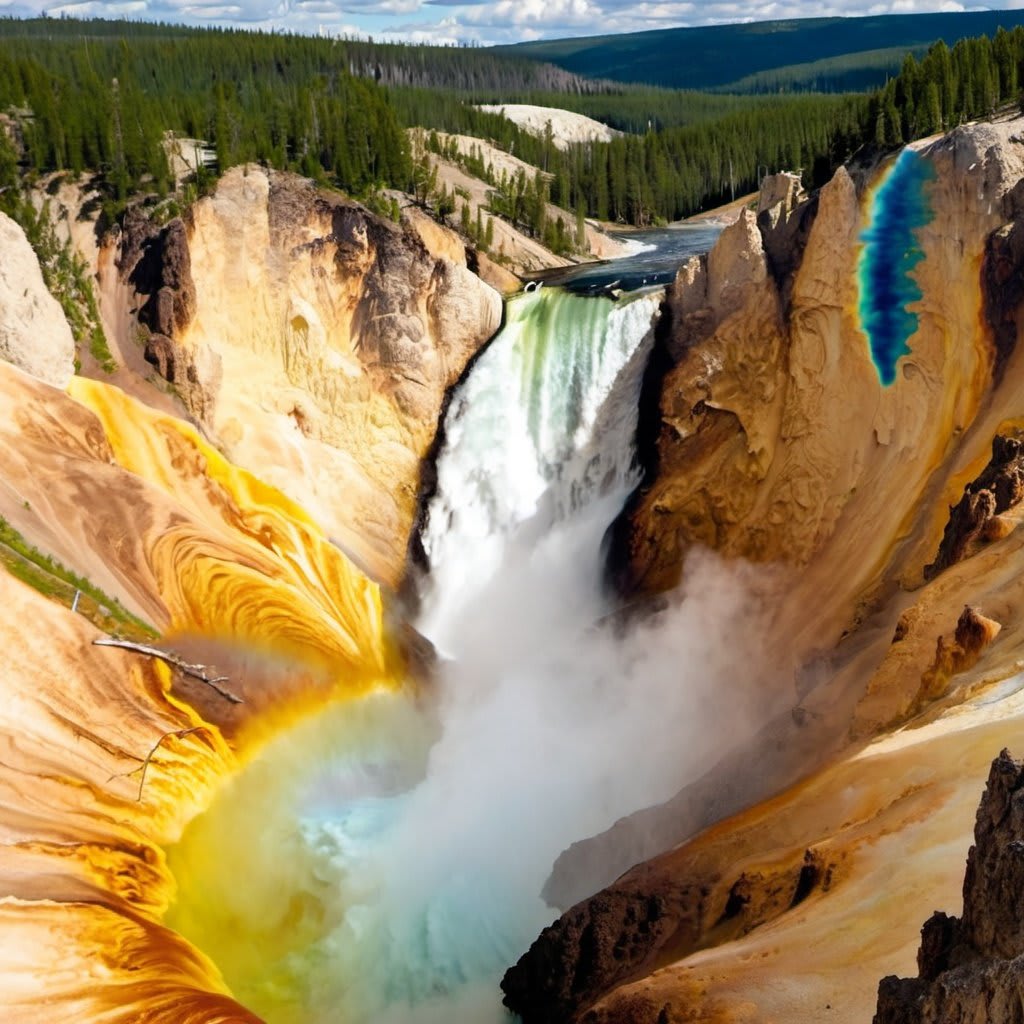
Yellowstone National Park is renowned for its stunning geysers and hot springs, a result of its unique geological features. But what many may not realize is that beneath this natural wonder lies a colossal super volcano. Recent research has unveiled the true extent of this geological marvel, shedding light on its immense size and potential impact.
In 2015, scientists from the University of Utah made a startling discovery: Yellowstone's magma chamber was even larger than previously believed. Not only that, but they identified an additional reservoir of magma beneath the primary chamber. Together, these reservoirs hold enough magma to fill the Grand Canyon eleven times over. The pressure exerted by these chambers causes the land above Yellowstone to rise by about one to two inches annually.
Yellowstone's status as an active volcano is underscored by its high volcanic explosivity index, which measures its potential for eruption on a scale of one to eight. A rating of eight places it among the most catastrophic volcanic events conceivable. To put this into perspective, the eruption of Mount Pinatubo in 1991, one of the most powerful in recent history, was rated a mere six on this scale.
While Yellowstone experiences frequent seismic activity, experts assure us that these tremors are not cause for immediate concern. In March 2023, the region experienced a swarm of earthquakes, with the most significant registering a magnitude of 3.7. Although such events may seem alarming, they are considered normal fluctuations for a region of geological activity.
Michael Poland, a geophysicist at the Yellowstone Volcano Observatory, reassures the public that an eruption is not imminent. For Yellowstone to erupt, specific conditions, such as sufficient magma and pressure, must be present, neither of which currently exist. However, Poland and his team remain vigilant, monitoring various indicators of potential volcanic activity, including earthquake frequency, ground deformation, and thermal anomalies.
Despite media speculation about Yellowstone's overdue eruption—its last super eruption occurred 70,000 years ago—experts caution against such deterministic thinking. Volcanoes do not adhere to predictable timelines, and Yellowstone is no exception. Instead, scientists focus on interpreting warning signs, such as seismic activity and changes in thermal features, to anticipate potential eruptions.
The consequences of a Yellowstone super eruption would be catastrophic. Historical evidence reveals at least three such eruptions in the volcano's past, the most recent forming the Yellowstone Caldera. These events unleashed vast quantities of dust, volcanic ash, and rock into the atmosphere, altering global climate patterns for years.
Understanding the lead-up to a super eruption provides insight into its devastating effects. Thousands of years before the cataclysm, underground pressure and heat built within the magma chambers, gradually reshaping the land above. As the eruption approached, warning signs, such as increased seismic activity and ground deformation, became apparent. Finally, the eruption itself unleashed a pyroclastic flow—a deadly mix of lava, ash, and gases—that devastated the surrounding landscape.
The aftermath of a super eruption would be equally dire. Volcanic ash would blanket vast regions, disrupting ecosystems, agriculture, and infrastructure. The global climate would undergo significant cooling due to ash blocking sunlight, leading to widespread crop failure and environmental devastation.
Fortunately, the likelihood of a Yellowstone super eruption occurring in the near future is low. While the volcano remains active, there are currently no indicators of imminent danger. Nonetheless, ongoing research and monitoring efforts are essential to understanding and mitigating the risks posed by this geological phenomenon.
In conclusion, while the specter of a Yellowstone super eruption looms large in the public imagination, the scientific reality is more nuanced. By studying past eruptions and monitoring present activity, scientists can better predict and prepare for the potential impacts of this awe-inspiring natural wonder.





Comments (2)
This is good. We have to think about the sustainability when dealing with our Earth.
Wow! Yellowstone is amazing! I want to see the volcano!